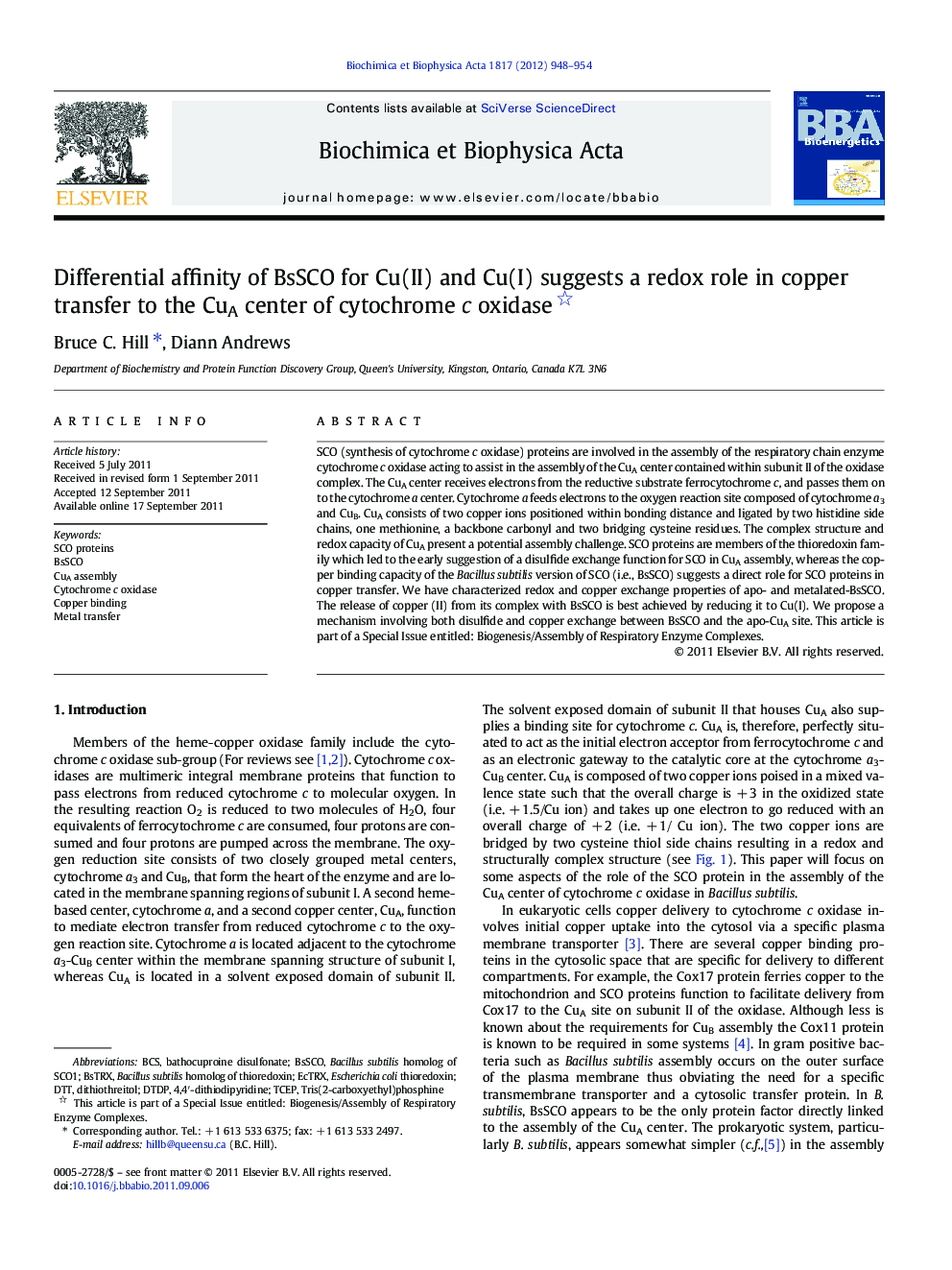| کد مقاله | کد نشریه | سال انتشار | مقاله انگلیسی | نسخه تمام متن |
|---|---|---|---|---|
| 1942444 | 1052612 | 2012 | 7 صفحه PDF | دانلود رایگان |

SCO (synthesis of cytochrome c oxidase) proteins are involved in the assembly of the respiratory chain enzyme cytochrome c oxidase acting to assist in the assembly of the CuA center contained within subunit II of the oxidase complex. The CuA center receives electrons from the reductive substrate ferrocytochrome c, and passes them on to the cytochrome a center. Cytochrome a feeds electrons to the oxygen reaction site composed of cytochrome a3 and CuB. CuA consists of two copper ions positioned within bonding distance and ligated by two histidine side chains, one methionine, a backbone carbonyl and two bridging cysteine residues. The complex structure and redox capacity of CuA present a potential assembly challenge. SCO proteins are members of the thioredoxin family which led to the early suggestion of a disulfide exchange function for SCO in CuA assembly, whereas the copper binding capacity of the Bacillus subtilis version of SCO (i.e., BsSCO) suggests a direct role for SCO proteins in copper transfer. We have characterized redox and copper exchange properties of apo- and metalated-BsSCO. The release of copper (II) from its complex with BsSCO is best achieved by reducing it to Cu(I). We propose a mechanism involving both disulfide and copper exchange between BsSCO and the apo-CuA site. This article is part of a Special Issue entitled: Biogenesis/Assembly of Respiratory Enzyme Complexes.
Figure optionsDownload high-quality image (100 K)Download as PowerPoint slideHighlights
► BsSCO binds Cu(II) with much higher affinity than Cu(I).
► Binding of Cu(II) follows a two-step process leading to stable complex.
► At high ionic strength Cu(II)/BsSCO binding is transient.
► BsSCO–Cu(II) complex is reducible and resulting BsSCO–Cu(I) complex undergoes facile metal exchange.
Journal: Biochimica et Biophysica Acta (BBA) - Bioenergetics - Volume 1817, Issue 6, June 2012, Pages 948–954